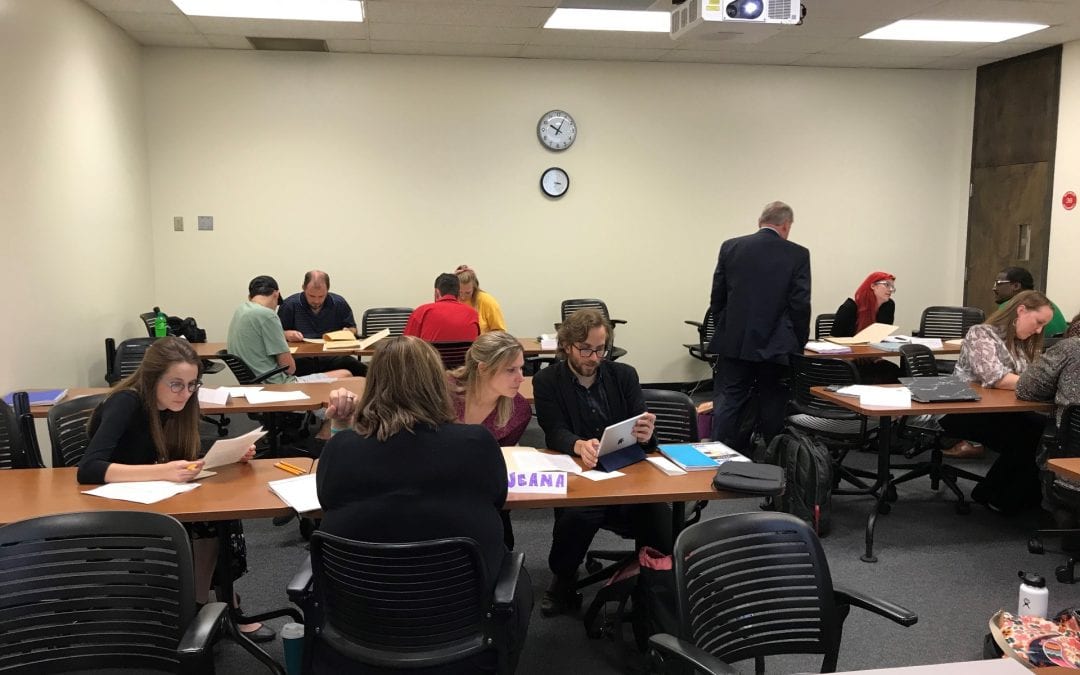One of the cornerstones of the work we do in the Special Collections department is to work with our faculty and their students to incorporate primary sources into their classes. This fall, I had the opportunity to work with three classes in agriculture, documentary film, and higher education to expose students to the powerful experiences one can have in an archive. While some may think that working with archival collections is reserved only for those in history classes, our collections connect to nearly every subject taught at the university. Teaching with archival objects enables students to literally put their hands on history – whether that’s university yearbooks, agricultural reports, photographs of refugees, or letters related to an incident on campus.
I vividly remember my first experience being in an archive with one of my classes. I was a freshman taking a gender studies class, and our professor held one of our sessions in the archive. I was blown away by the different kinds of things we worked with – letters, diaries, posters, zines, scrapbooks, and more. That active learning experience guides my own instruction practice when I work with students. Such active learning is one of the things that distinguishes an academic archive from a museum collection – our materials are not kept behind glass. Rather, we encourage our faculty and students to touch, smell, and examine these objects as part of their intellectual inquiry.
One of my favorite activities is working with a class to create an advertisement or public service announcement for using our collections. I give students the choice between acting out their announcement and filming it on one of their phones. Part of the work involves explaining how they used specific documents and objects to develop the argument presented. Not only does this kind of activity encourage students to use multi-modal learning techniques, it also encourages them to see archival objects as a springboard to further ideas and inspiration.
It’s my great privilege to work at a university where so many students can have these transformational experiences. Our department’s reading room – the space we reserve for people using our collections – is often full of faculty and students working on a class assignment, exploring a personal interest, or delving into a new project with an unknown destination in mind.
I welcome and invite you to consider how you might use our collections. If you have any questions or would like to talk with one of our faculty about developing an instruction session or assignment, or if you’re a student who is interested in doing research, please reach out to us and we’re happy to talk with you. Our Special Collections department is on Level 1 of Mullins Library, so feel free to stop by and get inspired!
